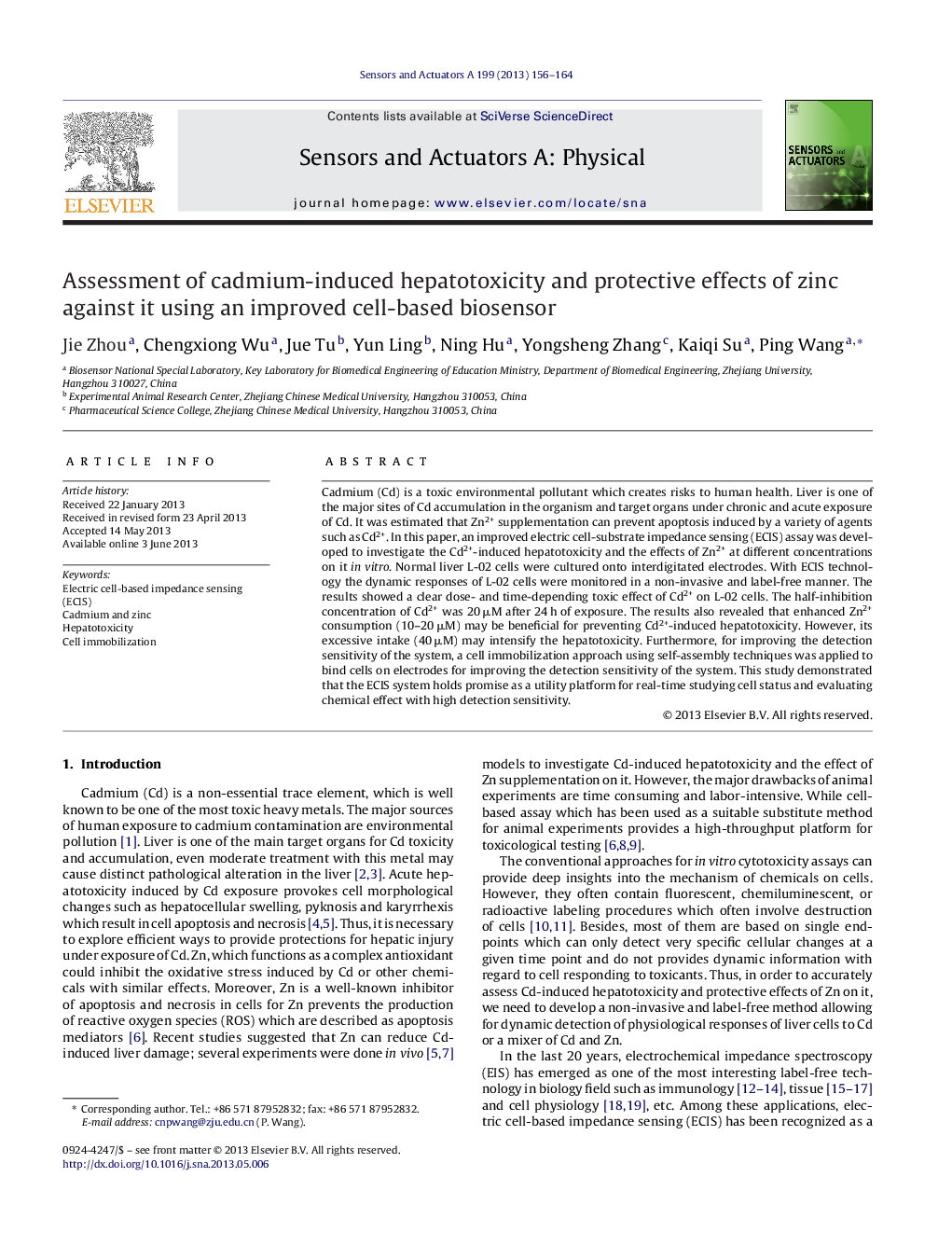| کد مقاله | کد نشریه | سال انتشار | مقاله انگلیسی | نسخه تمام متن |
|---|---|---|---|---|
| 736269 | 1461901 | 2013 | 9 صفحه PDF | دانلود رایگان |

• The electric cell-substrate impedance sensing (ECIS) system was used to study the cellular changes induced by chemicals.
• The Cd2+-induced hepatotoxicity was concentration dependent and time dependent.
• Appropriate amount of Zn2+ had a hepatoprotective effect toward Cd2+-induced hepatotoxicity, whereas excessive intake may be toxic to cells.
• The self-assembled poly-l-lysine was applied to immobilize L-02 cells on electrodes for improving the detection sensitivity of the ECIS system.
Cadmium (Cd) is a toxic environmental pollutant which creates risks to human health. Liver is one of the major sites of Cd accumulation in the organism and target organs under chronic and acute exposure of Cd. It was estimated that Zn2+ supplementation can prevent apoptosis induced by a variety of agents such as Cd2+. In this paper, an improved electric cell-substrate impedance sensing (ECIS) assay was developed to investigate the Cd2+-induced hepatotoxicity and the effects of Zn2+ at different concentrations on it in vitro. Normal liver L-02 cells were cultured onto interdigitated electrodes. With ECIS technology the dynamic responses of L-02 cells were monitored in a non-invasive and label-free manner. The results showed a clear dose- and time-depending toxic effect of Cd2+ on L-02 cells. The half-inhibition concentration of Cd2+ was 20 μM after 24 h of exposure. The results also revealed that enhanced Zn2+ consumption (10–20 μM) may be beneficial for preventing Cd2+-induced hepatotoxicity. However, its excessive intake (40 μM) may intensify the hepatotoxicity. Furthermore, for improving the detection sensitivity of the system, a cell immobilization approach using self-assembly techniques was applied to bind cells on electrodes for improving the detection sensitivity of the system. This study demonstrated that the ECIS system holds promise as a utility platform for real-time studying cell status and evaluating chemical effect with high detection sensitivity.
Journal: Sensors and Actuators A: Physical - Volume 199, 1 September 2013, Pages 156–164